As I mentioned last week, today’s stop on our Tuesday Tour is one of the least attractive stations on the Hudson Line, Croton-Harmon. You have to have mixed feelings about this place, because despite not looking all that spectacular, there’s a lot of action going on here. Not only does Croton-Harmon serve Metro-North, Amtrak has several trains which stop here. The station is also the northern terminus of electric service on the Hudson Line, and although Metro-North offers many through trains, some passengers still have to transfer here, so it is definitely a busy station (in the past fewer through trains were available, thus transferring here was a must). Metro-North’s Croton-Harmon shops, which recently won a Brunel Award, are also here, which certainly adds to the action.
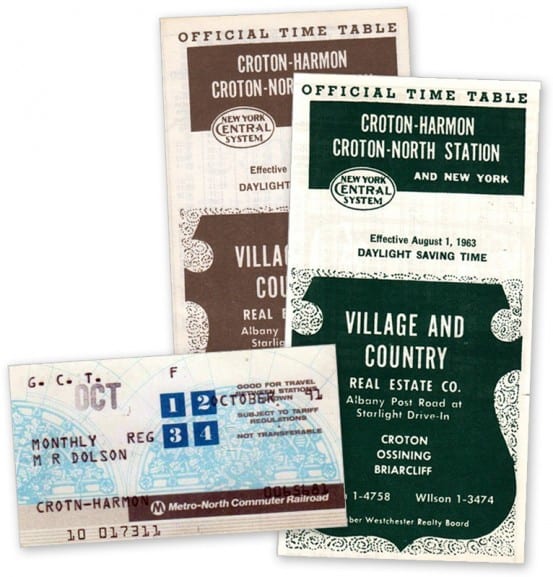
Croton-Harmon timetables and ticket.
Croton-Harmon station is located about 33 miles from Grand Central, and a ride to the Terminal takes, on average, around an hour. However, there are a few express trains that will get you there in around 42 minutes. In terms of ridership, Croton-Harmon is the busiest station on the Hudson Line, and the sixth busiest system-wide (strictly Metro-North traffic and not counting GCT. Only White Plains, Stamford, Scarsdale, New Haven, and New Rochelle get more weekday passengers). Amtrak service adds another 42,000 passengers a year traveling through the station.
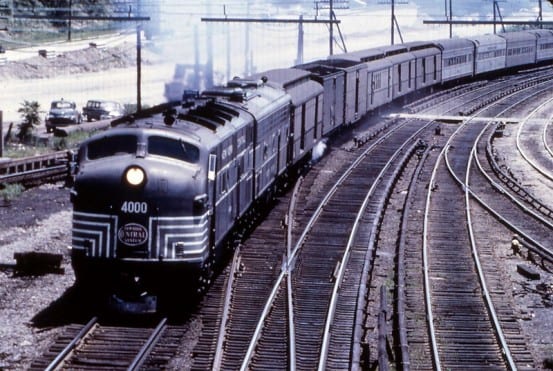
Croton-Harmon through the decades: 1963. The Hudson Division was part of the New York Central at this time.
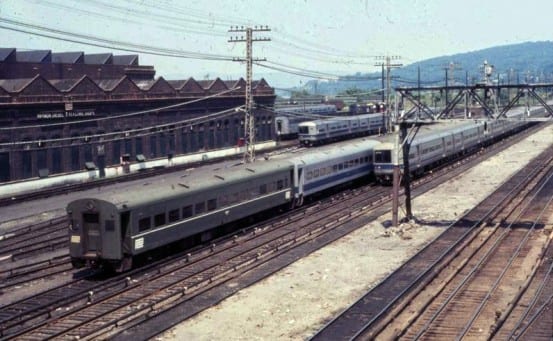
Croton-Harmon through the decades: 1974. The Croton-Harmon shops in the Penn Central years. Penn Central Memories on Flickr has a lovely collection of photographs at Croton-Harmon in this era.
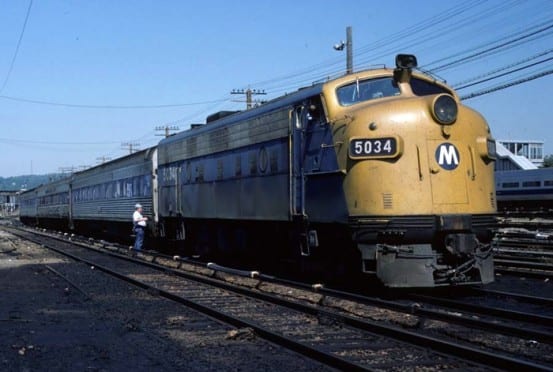
Croton-Harmon through the decades: 1984. Metro-North is still a fledgling railroad, after taking over from Conrail in 1983.
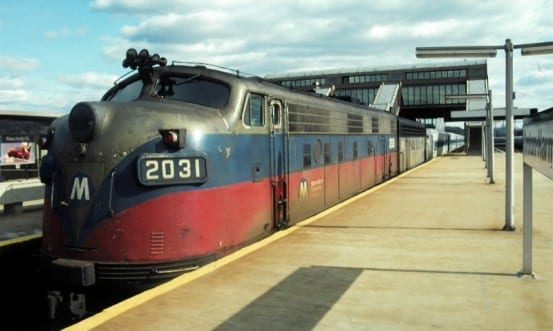
Croton-Harmon through the decades: 1992.
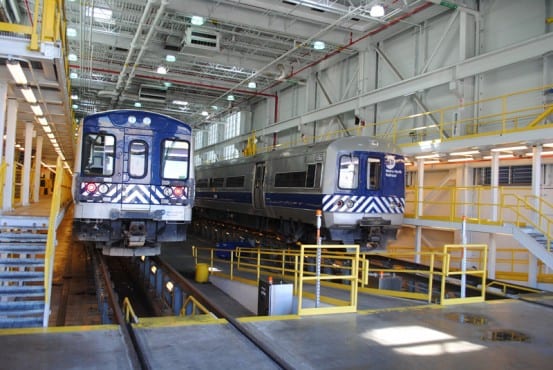
Croton-Harmon through the decades: 2012. The current award-winning shops at Croton Harmon. [image source]
Denoting its busy status, Croton-Harmon has three island platforms, allowing multiple trains to stop at the station simultaneously. Above the platforms is an enclosed waiting room for passengers. Croton-Harmon is one of the few system stations to still have a manned ticket window, which serves Metro-North customers only. Amtrak does have two ticket machines not far from the ticket window. The waiting area also has a few vending machines, and restrooms available. Closer to the parking lot, the station also has a cleaners – this building was the temporary station in 1988 as the current station was under construction.
There isn’t much else noteworthy to mention of today’s Croton-Harmon – it is a busy, functional Metro-North station, that when compared with other Hudson Line stations like Poughkeepsie and Yonkers, is hardly attractive. With the traffic moving in and out, the station is at least nice place to watch trains… thus I’ll let the photos below speak for themselves!


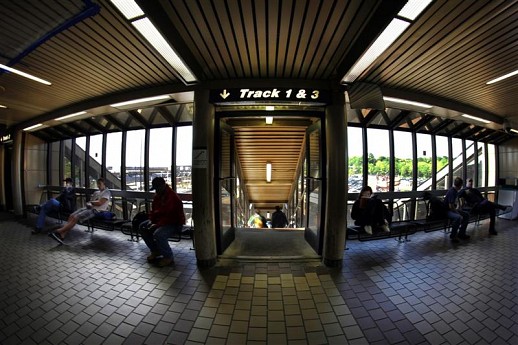

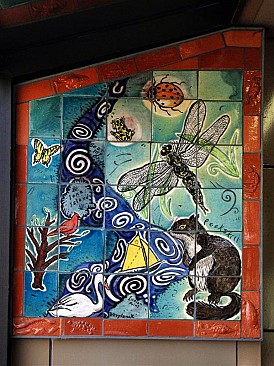
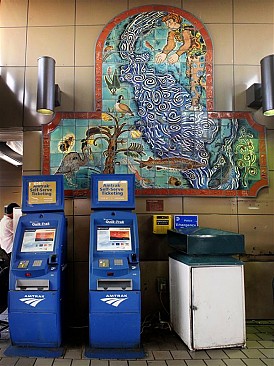
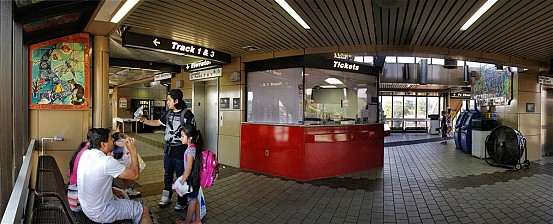
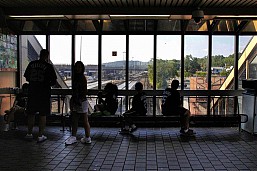
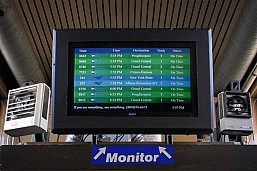
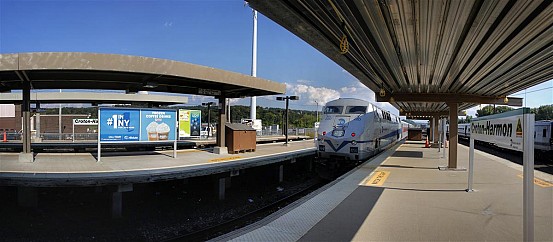
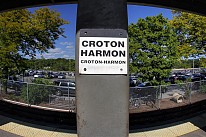
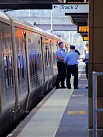
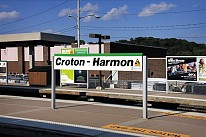
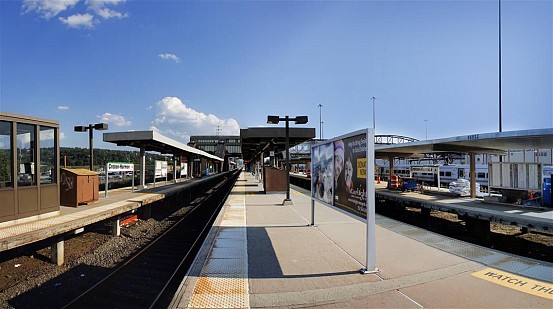
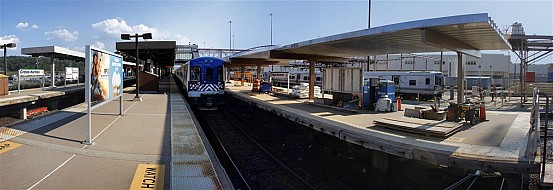
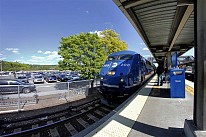
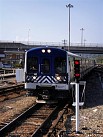
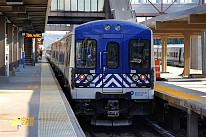
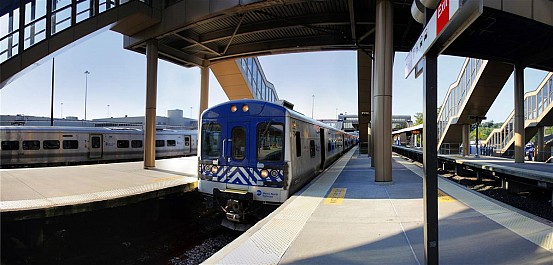
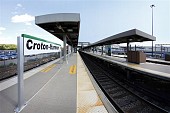
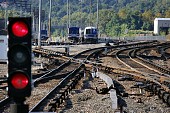
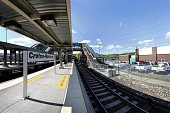
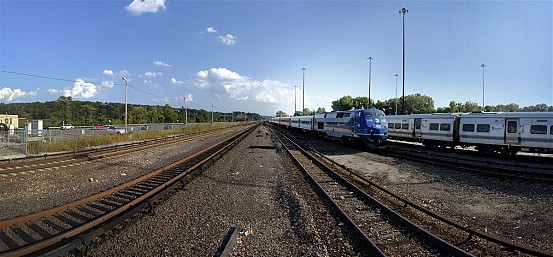
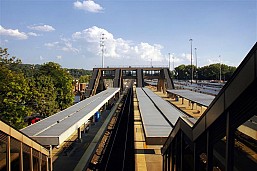
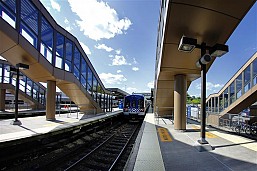
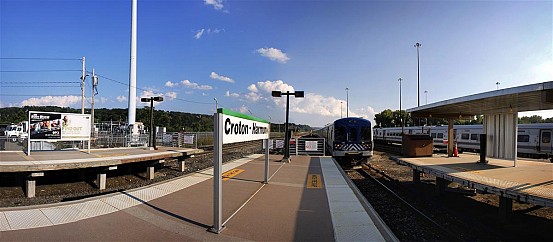
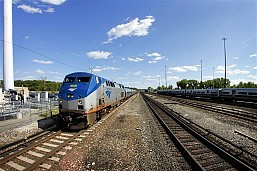
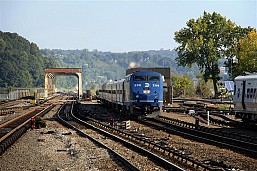
What a beautiful day for a station tour! Lovely photos.
I wonder when New York Central changed the name of the station from “Harmon” to “Croton-Harmon?” I hope someday Metro-North replaces this facility with something that is not so utilitarian.
Amtrak claims that the station name was officially changed to “Croton-Harmon” in 1963. They also claim that the man named Harmon that gave up his land to build the station, stipulated that the station must always bear his name.
I was curious about the name and, failing to find anything with Google, I contacted the Croton Free Library. Clifford B. Harmon was a real estate developer who acquired land from the Van Cortlandts in 1903. His 1932 sale of property to the railroad not only stipulated that the station would always bear his name but that all trains, express and local, would always stop there. You can find out more by Googling his full name.
Back in the days when NYC still lived,Most if not all long distance trains
stopped at Harmon to swap electric for diesel power before heading north/
west to Chicago,Buffalo,Toronto,etc. The same process was done for GCT
bound trains as well.The only exceptions were Mail/Express
trains heading to/from the West 30th st Branch at DV.
The engine swap was done in about 15-20 mins(per the rules).
This continued to the Amtrak era untill 6 FL-9’s were rebuilt to make the run to Albany/Rensselaer and Amtrak’s shop there.
The orignal station building at Harmon was lost to fire,but not sure of the
year that happened.
The pictures suggest that all the infrastructure associated with the engine change has been removed. Imagine a Super Hudson backing along the jumpover track from the roundhouse to the westbound main to take over the Twentieth Century Limited.
WTB revival of annual shop tours, since I missed the boat on those way back when :P
There has been a long ongoing discussion about the MN open houses at the shops there at Croton-Harmon. Basically it costs MN a fortune in OT and in lost man hours straightening up the place as well as the inability to really repair or work on anything while the tours are happening. If you wish to take a tour of a working railroad shop – although it’s not Metro North, The Strasburg Railroad in PA offers a daily guided shop tour at 12:30 every day. I have done this tour myself and found it to be quite interesting.
Oh believe me, I know – I’ve read the threads and I know how much of a pipedream it is.
If I’m ever out that way though, I’ll have to keep that in mind.
All of this is true – it costs quite a bit to do the open house. However, with all the bragging they’re doing about these new award winning Croton Harmon shops, you would think that they’d want to hold at least one more open house so everybody could see it.
Or maybe they’d let a transit journalist who’s already interviewed the company president visit the shops and post beautiful panoramas of it on her blog… Hey, it’s worth a try!
My mother and I often stood on the bluff above and just north of the station and watched for hours as engines were changed. Not only did we see Super Hudsons, but also the new Niagaras, and once we saw the beautiful Dreyfuss designed 20th Century Limited Hudson. Those were exciting days years for the New York Central right after WW-II.
Croton-on-Hudson station was about 2 miles north of Harmon, notable because the electrified service continued past Harmon to that station. Harmon could not serve commuters due to the high long distance passenger traffic and engine exchange requirement. So the Central used Croton-on-Hudson to serve the commuters in the area. I assume this service was stopped when long distance passenger traffic waned during the 1950s, lessening the traffic load on the Harmon station, which allowed the two stations to be combined. Perhaps Emily has information of the history and demise of the Croton-on-Hudson station.